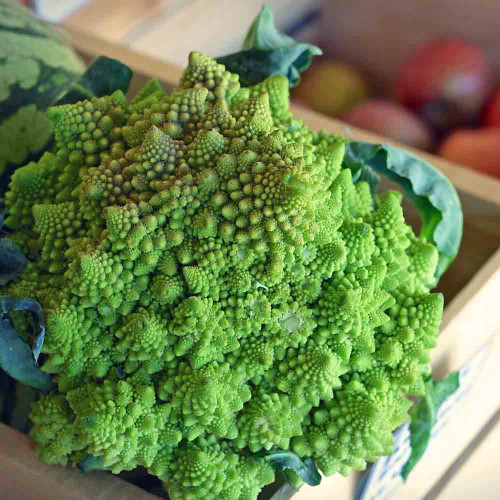Description
Romanesco Fennel
Traditional Italian herb with a wonderful anise taste. Romanesco Fennel is also called Roman or Florence Fennel.
Very sweet and aromatic late maturing variety produces a large head with thick white tightly wrapped stalks. Almost always grown as an annual, this aromatic perennial grows to about five feet in height, having long, fine, dark green, feathery leaves, umbels of yellow flowers, and small, ridged, oval-shaped fruits, usually called seeds, which are gathered in the autumn. Growing fennel for seeds is a biennial process, as the fruit or seeds only set in the second year. The tall stalk looks like celery and is often consumed as a vegetable, while the leaves and seeds are used to flavor foods. Although the taste and aroma of fennel are sometimes mistaken for anise or licorice, the plant is actually related to caraway.
Details
For seed harvest, northern growers should dig up the plant, along with its tap root. Trim the stems to 4-5 inches long. Put them in sand in a humid, cool root cellar or cold frame. In the spring, trim the roots a bit and plant 36 inches apart. Warmer climates should mulch the bulbs well in fall, uncovering again in warmer weather. The fennel will grow to full height, bloom and set seeds. Harvest the seeds when they turn from green to light brown. Harvest in the morning to minimize seed losses, spreading on a cookie sheet to allow to fully dry.
Fennel is not friendly to most other garden plants, notably bush beans, caraway, tomatoes and kohlrabi. Its seed growth is stunted by coriander. However, it is beneficial to cabbage, leeks, Swiss chard and zucchini. Moderately fertile soil with good calcium and full sun is preferred. Avoid constant moisture.
History
Native to the Mediterranean Basin region, Fennel is now cultivated worldwide. One of the oldest cultivated plants, much valued by the Romans; it was first planted in the US in the early 1800s.
Uses
Medicinal uses include: antispasmodic, appetite stimulant, anti-inflammatory, diuretic, relieving flatulence and bloating, as well as stimulating the flow of breast milk. Recent research has shown fennel seed extracts have proven to calm muscle spasms by reducing smooth muscle contractions. Other studies show that substances in fennel can reduce airway congestion by thinning and loosening phlegm, which supports the addition of fennel in numerous European cough remedies. Fennel and ginger make a good digestive tea. Steep the fresh leaves with some sliced ginger for 5 minutes in boiling water.
Recipe ideas include: Adding cooked fennel to omelets, quiches, stuffing or sauces, add a couple of fennel stalks to beef or chicken stock for a new flavor profile, sauté fennel with onion and garlic on a low heat and add to tomato pasta sauce. Used to add flavor to breads, curries, apple pie and fish or poultry dishes. Fresh bulbs roasted with olive oil are classic Italian cooking.
Planting Tip
Plant fennel in colder climates in the spring and in the fall in warmer or milder winter climates.
Learn More
From the soil to the seed to the food you eat - we'll help you grow your best garden!













